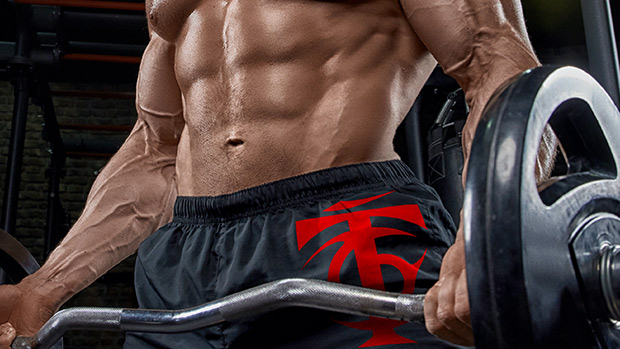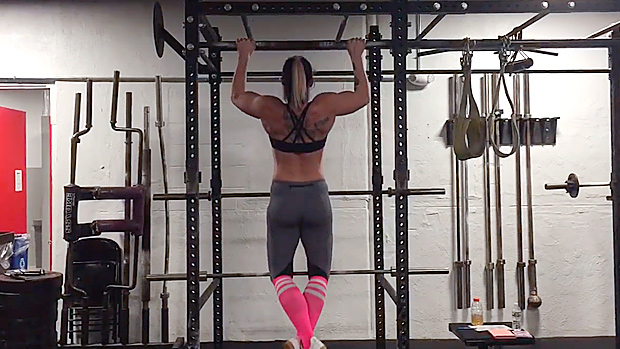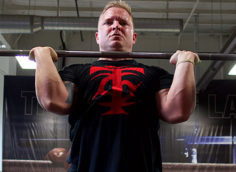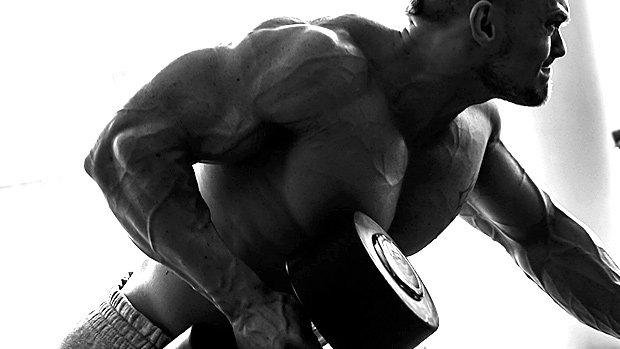Miss Part 1 of this lively debate? Check it out here.
T-Nation: Thib, what's your take on the goal question? Does the full body vs. splits debate change when we're talking about athletes instead of bodybuilders?
Thibaudeau: Different goals require different approaches because of the individual needs of each situation.
Athletes:
- Can't afford to spend as much time in the gym because of their busy training schedule.
- Must improve physical capacities in the basic movement patterns.
- Need to improve intermuscular coordination as much as possible.
- In most sports, a huge gain in body weight isn't desired (e.g. sports with a weight class limit).
- Athletes will seek mostly neural (CNS) improvements from strength training.
Powerlifters/Strength Athletes:
- Need to maximize the performance in a few specific lifts (squat, bench, deadlift).
- Require an important contribution from the CNS, tendons, and muscles.
- Need to improve the whole strength-speed spectrum.
- Most powerlifters will seek to increase muscle mass, but not if this increase isn't functional (doesn't bring a proportional strength increase).
- So powerlifters will need to improve both the CNS and muscle tissue while improving coordination in the competition lifts.
Bodybuilders:
- Need to increase muscle mass as much as possible.
- Not only do they want to add muscle, but they must do so in proper balance. If a muscle is out of whack with the rest of the body, this must be addressed.
- While strength is a bonus (as it allows for the use of more weight for the bodybuilding-specific intensity zones), it's not a primary goal.
- So bodybuilders need to improve the muscular system much more than the CNS.
Right off the bat, I think that it's obvious that one single "universal" split can't be adequate for such different situations.
I think we'll all agree that the key to improvements in CNS efficiency is the frequency of practice. It's like with golf, if you want to improve it's much better to hit 50 balls six days a week than to hit 300 balls once a week. Strength and power demonstrations are skills because they're so highly dependant on the CNS. For that reason, the more CNS-oriented your training needs to be, the more frequently you should train a given movement pattern.
For example, athletes rely mostly on the CNS since they're basically training to improve movement patterns and whole-body synergy. For that reason, they should train each movement pattern with a high frequency. Since they're also doing other forms of training, they can't really afford to spend five or six days in the gym. In their case, a whole-body approach three times a week would fit the bill of a high frequency of movement pattern practice, without having to be chained to the gym.
Powerlifters should split their training into "lift days." Basically, on a given workout you focus on a competition lift as well as the muscles involved in that lift.

On the opposite end of the spectrum, bodybuilders need to develop each muscle to the maximum of their capacity while keeping the muscles in proportion. For that purpose, a whole-body approach isn't adequate because it's highly unlikely that an individual will be able to fully develop every single muscle in proper proportion from a whole body split. It would require way too much volume per session; it would end up being counterproductive as far as recovery goes.
Some will argue that it's possible to develop all muscles groups when relying on a limited amount of basic exercises. While this is somewhat true, it isn't a perfect solution for most because compound movements will develop your strongest muscle groups the most, just like in my previous bench press example. When it comes to building the whole body in proportion, relying only on a few select exercises could be problematic.
Another problem with whole body training for bodybuilders is that you'll be much less effective on the latter exercises in the workout because of the accumulated fatigue. This isn't as much of a problem with athletic-type training because there's less metabolic accumulation and less glycogen drainage (because athletes will normally focus on lower rep ranges or explosive movements), so they'll still have plenty of energy for the latter exercises.
However, bodybuilding training (using higher rep ranges, supersets, drop sets, short rest intervals, etc.) leads to a greater accumulation of lactic acid and causes more fatigue. So if you're trying to build the body in proportion, this could cause a problem because the muscles being trained last will receive a lesser stimulus for growth. Obviously, this could be countered by rotating the exercise order from workout to workout, but who wants to squat at the end of a whole body workout?
Bodybuilders, more than other athletes, also must live with one harsh reality: not all of their muscle groups will grow at the same pace. This could be due to the fiber composition of the individual muscles, to body structure, or to training experience. So eventually it might be required to perform more work for the lagging muscle groups.

Basically there comes a point where bodybuilders will need to add more exercise variation to build some muscle (or some muscle portion) so that the body is kept in balance. This requires a greater volume of work per muscle group, a thing that can't really be accomplished with whole body training.
That having been said, not everybody falls into one of these three categories. Not all gym rats are powerlifters, athletes, or bodybuilders. In fact, most aren't. I'd say that most serious iron addicts are somewhere between the three animals: they want to look good, be strong, and be athletic. For these individuals, the answer is less white or black: they can opt for several different options.
For these guys, an upper/lower body split like one of these might be ideal:
Option 1 (More bodybuilding/muscle oriented)
- Day 1 (Monday): Legs, quad dominant/calves
- Day 2 (Tuesday): Upper body pull
- Day 3 (Thursday): Legs, hips/hams dominant
- Day 4 (Friday): Upper body push
Option 2 (More movements oriented)
- Day 1 (Monday): Legs, quad dominant/calves
- Day 2 (Tuesday): Upper body, horizontal push and pull
- Day 3 (Thursday): Legs, hips/hams dominant
- Day 4 (Friday): Upper body, vertical push and pull
Someone who's more into bodybuilding gains, even if he doesn't have plans to compete, could use one of these splits:
Option 1
- Day 1 (Monday): Shoulders/triceps
- Day 2 (Tuesday): Quads/hams/calves
- Day 3 (Thursday): Back/rear delts
- Day 4 (Friday): Chest/biceps
Option 2
- Day 1 (Monday): Quads/hams/calves
- Day 2 (Tuesday): Chest/Back
- Day 3 (Thursday): Shoulders/rear delts
- Day 4 (Friday): Biceps/triceps
Basically, the more volume you use per muscle group, the less frequently a muscle group can be trained.
Cosgrove: Christian's answer is pretty much in line with my own beliefs. I disagree that a drug-free individual can make optimal progress hitting a muscle group once a week though.
However, if you're working with a guy like Stan McQuay, then you damn sure better be focusing on body parts. I don't see them but I'm sure Stan has "weaknesses" in the judges' eyes that need specialized work. When you add work, you add volume. And because of time, you have to move away from a full body or upper-lower split.

But I maintain that most (not all, so don't fucking start, forumites!) of the readers on this site don't need that kind of specialization. Stan McQuay isn't the norm. Most of us need more muscle and less fat everywhere.
I think it was Christian himself who once made an excellent point that you can really only gain two pounds of lean mass per month. I agree with that. So what's the best way to max that out?
Let's assume we're training three times per week. Is it better to use a body part split and train the whole body four times that month? Or use total body workouts and work the whole body twelve times in the month? It's like which builds more muscle – deadlifts or hammer curls? The more muscle we work, the more muscle we build.
Waterbury: I've got to jump in here real quick and take exception to a few things Christian said. First, the notion that bodybuilding splits cause more lactic acid accumulation and more fatigue is completely backward in my book. I've never seen any training system cause more lactate accumulation and fatigue than high rep, total body circuits with short rest periods.
Do 15 squats, followed by 15 military presses, followed by 15 deadlifts, followed by 15 chins, and tell me that it's less fatiguing than triple drop sets for biceps curls. This circuit is an excellent way for fighters to train so I'm not sure why "athletic-type" training is limited to low reps that don't drain glycogen stores.
Second, I simply don't see why compound movements must only build the strongest muscle groups. Sure, if you do nothing but low bar, wide-stance powerlifting squats you're going to build the muscles that are strongest for that lift. But whatever happened to switching to one-and-one-fourth front squats to build the vastus medialis? And what about heavy partial front squats to build the vastus lateralis? And what about lateral lunges to build the adductors?
There's simply no need to do leg extensions when there are hundreds of compound variations that will emphasize whatever muscle groups you're trying to improve.
Thibaudeau: I'm not saying that compound movements won't build all the muscles involved in a lift. However, I am saying that the strongest muscle group (or the more mechanically advantaged one) will receive a greater growth stimulus. So its relative improvement will be greater than that of the other muscles involved.
I also agree that making technical modifications to compound lifts will vastly change muscle recruitment. But this isn't a discussion on the validity/necessity of isolation exercises, but rather about training splits. And the fact that you can use more compound movements to develop all muscles in proper balance still means that you have to perform a greater number of exercises, which is my problem with whole body training.
T-Nation: Okay, let's move on. The most common criticism of total body training on our forums seems to go like this: As great as the benefits seem to be, no professional bodybuilders or fitness competitors are doing it! Sure, they're often drugged genetic mutants, but still, you'd think that if full body workouts were so great, you'd see less "back and biceps" days amongst the professionals. Comments?
Cosgrove: Great point! If you're a "drugged genetic mutant" as you say, or a professional athlete who does this for a living, then focusing on the "details" is a great idea. But again, is it really worthwhile for us to look at the gifted few when we're writing articles for the majority?
If I train high school kids who need to get stronger and faster, should I follow what Asafa Powell is doing to improve his 100 meter time, or what Paul Childress is doing to improve his squat? Or would it be more useful to follow what Joe DeFranco is doing with his high school and college athletes?
It's the same with bodybuilding in my opinion. I can't take Ronnie Coleman's routine and use it for a 35 year old male who works fifty hours a week and can get to the gym for about three hours per week.
Also, you need to go to a low level show and look at the physiques. Don't look only at the professionals in the Olympia (the very top of the sport). At the top level these guys are impressive, but by very definition how many "bodybuilders" get their pro card? Or qualify for nationals?
Let's look at the low level shows and the guys who don't place in the top two or three; in other words, the average, drug-free response to these training methods before we adopt them.
Secondly, we can't look at modern day bodybuilders without taking into account the drug use – that changes everything. We also can't use Arnold as an example of the body part split because Arnold was also world champion, part of the genetic elite, and believed in training for up to two hours twice a day. And he also used drugs!
You can't take a program that was for a genetically gifted world champion training up to two hours a day, twice a day, and involved the use of drugs, and try to apply that info to a drug-free guy who trains three days a week. It's a pointless exercise.
It's like using Pyrros Dimas as an example of Olympic lifting for aesthetics. Yeah, it worked, the guy is jacked, but he's also a full time athlete who trained eleven times per week and won three Olympic golds – it's not really relevant for most of us.
So let's take a wee look at what was effective before the popularity of drugs. Perhaps some examples through the years are in order:
- Alan Calvert, from his First Course in Body-Building and Muscle-Developing Exercises, 1924: Total body
- Mark Hamilton Berry, from his First Course in Physical Improvement and Muscle Developing Exercises, circa 1936: Total body
- John Grimek in the 30's to 40's: Total body
- Steve Reeves in the 40's: Total body
- Harry Barton Paschall, The Bosco System of Progressive Physical Training, 1954: Total body
- Joseph Curtis Hise and Peary Rader in the mid to late 50's: Total body
- John McCallum, from his Keys to Progress series, circa the mid-1960s: Total body

Let's not ignore what bodybuilding from the past has shown to work.
Thibaudeau: My own opinion is that, for bodybuilding purposes, using a body part split is superior. So in that regard, it would seem like the comment "No pro's use full body routines" would tend to back up my point of view. Yet I don't agree with it!
The genetic elite (I prefer to put more credence in genetics than drugs when it comes to bodybuilding because I've seen too many drug users hardly look like they train at all) often reach the highest level of success in spite of what they're doing, not because of what they're doing.
Body part splits are associated with more bodybuilding success than any other form of training organization. However, it's also associated with more failure than any other form of split! That's simply because more people are training this way.
I'd say that the rate of success of a program isn't really dependent on the training split used, but rather to the means of training, exercise selection, level of effort, etc. That doesn't mean that a body part split isn't how a bodybuilder should train. However, the simple fact that "everybody is doing it" is in no way indicative of the superiority of the method.
I think it all boils down to muscle damage and recovery. If you place a lot of mechanical stress on the muscles at each training session (e.g. relatively high volume of work and/or using a lot of "intensive" training methods), your body will need more time to repair the micro-trauma placed on these muscles.
It's like any injury: the more serious it is, the more time to heal it'll require. So if a bodybuilder decides to utilize a relatively high volume of work for each muscle group, he'll need more recovery time before he hits that muscle again.
I really think that one of the reasons why a lot of people don't actually get a lot of results from a hitting a muscle group once every five to seven days is that they aren't able (or not willing) to train hard enough to cause the amount of micro-trauma that will necessitate that amount of recovery time. If you truly impose a lot of micro-trauma to your muscles, you will need five to seven days to recover and rebuild your muscles stronger.
But if the average trainee doesn't train hard enough, he won't progress optimally. However, if he were to hit each muscle group more frequently, he could have some more progress because what he lacks in micro-trauma per session he makes up for causing smaller amounts of micro-trauma more often. It's all a matter of the ratio between damage and recovery time.
Along these lines, beginners can and should train each muscle group more often than more advanced individuals. Why? Because their CNS isn't as efficient at recruiting muscle fibers. So "practicing" more often will improve their capacity to use the muscles and that will make their training more effective. Basically, they should first learn to use their muscles.
Second, their protective mechanisms (GTOs, muscle spindles, etc.) are set at a more conservative threshold. As a result, they can't use their muscles at a high percentage of their capacities. So, they won't be able to cause as much micro-trauma as advanced lifters when training and they should train more often to compensate.
However, advanced lifters who are able to cause more micro-trauma to their muscle in one training session should reduce training frequency to keep a positive relationship between recovery and damage.
Finally, I like the fact that Alwyn mentioned how we should look at champions from the 50s and 60s for answers. I fancy myself as being a weight training history buff myself, and I devour books about how the old-timers trained. I agree with Alwyn that his examples are great.
However, there are just as many examples of champions from the "other" side of the split vs. whole body training, if not more. For example, Larry Scott, the first Mr. Olympia, used not only a body part split, but a pretty high volume of training.

Chuck Sipes, who was not only Mr. World but also one of the strongest bench pressers of his era (bench pressing over 500 in contest shape!), trained three times a day using a body part split. Don Howorth, who sported one of the biggest pairs of delts in history, trained using a body part split, etc.
And I'm not sure if I like to see John McCallum and Joe Hise to prove your point. In my book, these guys were more like powerlifters in their builds. Not what I'd call a balanced bodybuilding physique.
I'll throw Alwyn a bone and mention Sergio Oliva. I can't believe you forgot to mention him to prove your point, man! Sergio used to be an international level Olympic lifter before moving on to bodybuilding training. I'm not helping my cause here, but I think it's worth mentioning him.

T-Nation: What do you think, Chad?
Waterbury: Uh, what was the question? If I remember correctly, I think Chris asked why more professional bodybuilders aren't using total body training.
As Alwyn alluded to, I'm not sure it's relevant to analyze how elite bodybuilders train. I think it's more appropriate to analyze how the genetically common man built his initial base of muscle. After all, if someone is a genetic freak they're probably not reading T-Nation daily to find out the secrets of adding more muscle. Those of us who weren't born from Arnold Schwarzenegger and Cory Everson, or those of us who don't use illegal bodybuilding drugs, need to play by different rules.
What I find so ironic about this debate is that Muscle Media 2000 and Testosterone became successful because the typical body part split with tons of volume doesn't work for the majority of the population. Around 90% of the population needs a different approach. That's a fact!
I've used those newsstand bodybuilding mag routines, and I bet the majority of the T-Nation readers have, too. That's how Weider sold all those mags: the false premise that if you do Arnold's routine you'll build Arnold's biceps. But the fact of the matter is that virtually no one who reads this spends his off-season at 240 pounds with 8% body fat like Arnold did.
Professional bodybuilders typically don't follow total body routines because they don't need to. If I'm born with the natural ability to drop into the full splits, I'm not going to spend my time stretching my adductors and hamstrings. And if I'm born with the ability to build huge quads, calves, and traps with minimal training, then I'm not going to spend my time training them either.
Instead, I'm going to pick and choose what needs the most improvement. That's where a body part split comes relevant, and that's what Arnold was referring to when he said bodybuilding is like sculpting: you need to add muscle where you need it most.
The majority of T-Nation readers, however, need to add muscle everywhere, not just to specific areas. And that's where total body training becomes the best option. I don't care what professional bodybuilders do unless whoever I'm working with is already at that level.
Case in point: I work with a competitive bodybuilder who just got his pro card. He hired me to fix his proportions and one of his problems is that his quads are absolutely massive compared to the rest of his physique. So do I do any quad exercises with him? Nope. But I still train his posterior chain and upper back at every session because he wants bigger biceps.
As for the notion that massive levels of workout volume are needed to grow a body part, I don't agree, at all. I've never seen any evidence that annihilating a body part results in more growth than stimulating it with moderate levels of volume and intensity.
For example, I've never seen a situation where twenty sets of five builds any more muscle than six sets of five. Unless a person has an incredible work capacity, the amount of motor units he can recruit at the twentieth set is going to be so low that it becomes futile. Once performance drops by 20-30% in a workout, I don't see the need to keep training that muscle group. It's like boxing: if your opponent is knocked out, there's no need to keep punching him. You're only accumulating excessive fatigue if you keep hitting him.
Five cycles of a triple drop set is a good example. For most, loading must be greatly decreased by the third or fourth cycle. This happens because the nervous system can no longer recruit the highest threshold motor units. Since force drops off substantially, how beneficial do you think those sets are for building bigger, stronger muscles?
That's where frequency becomes a juggernaut. Stimulate the muscles until force drops by 20-30%, and then return to the gym at a later time when you can once again recruit those highest threshold motor units. They recover faster than you probably believe.
T-Nation: If I ask another question, we'll be here for another four hours, so I'm cutting it off here, gents. There's steak and curvy companionship waiting. Let's go overindulge in both and let the T-Nation readers hash this out.
Maybe we didn't give them the answer, but we certainly gave them plenty to think about as it applies to their own training. Good 'nuf. Thanks!





